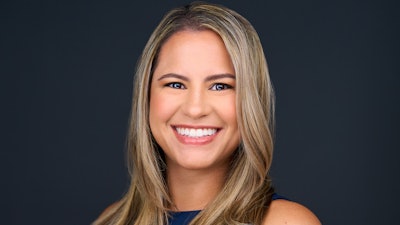
Are unpaid claims piling up on your desk? No time to appeal them?
Those who routinely file dental/medical insurance claims know the importance of including a straightforward, concise narrative to increase the chances of getting your submitted claims paid. The "what" and the "why" must be written so the claims reviewer can understand what treatment was delivered. Over the last few years, there has been a shift toward insurance plans wanting clinical notes instead of or in addition to a narrative because the narrative doesn't provide the information necessary to support the claim.
Many dental practices use canned or template narratives that fit the procedure but don't provide details for that individual patient. For instance, using the same narrative for every patient receiving a full-coverage crown is unacceptable. Narratives that use unfamiliar acronyms, abbreviations, and misspelled words often lead to the claim being thrown out.
Clinical notes are part of a patient's legal record in the paper or digital chart. They must support the narrative. However, narratives are often written on the claim only (or attached) and are provided by the person filing the claim. Insurance companies often want the clinical record notes, not the created narrative, to support the claim better.
Two types of Code on Dental Procedures and Nomenclature (CDT) codes require an explanatory narrative: the unspecified procedure by report codes, which are found in every category of dental service, such as D9999 -- Unspecified adjunctive procedure, by report -- and codes that include "by report" in their nomenclature, such as D7880 -- Occlusal orthotic device, by report.
A narrative that is written clearly and concisely will be acceptable to insurance plans if it includes specific information. A SOAP note format can be used to create clinical notes or narratives.
Below is an explanation of the SOAP format:
- Subjective: the patient's descriptive words (patient presents)
- Objective: what the dentist sees clinically via visual exams, tests, and radiographs
- Assessment: the dentist's clinical decision after the evidence is viewed
- Plan: the written treatment plan and options for treatment and patient acceptance
Ensure the following is also included in the narrative:
- A detailed description of the procedure performed
- The medical necessity or clinical reason for the procedure, including materials or extra time (over what is considered standard) necessary to complete the treatment
- Existing restorative work, dates, and descriptions
- The decay or damage to teeth. Include the amount, locations, and estimated amount of healthy remaining tooth structure, such as 50%
- The patient's symptoms and complaints related to the procedure
- The description of any new technology used to complete the procedure, e.g., cone-beam computed tomography scan, radiographs, intraoral photos, tests
- Any specific details required by the preferred provider organization contract to support the claim
The following is an example of a concise and clear clinical note/narrative:
Narrative for delivery of local anesthesia
Lidocaine gel topical anesthetic was placed on the lingual, adjacent to tooth #5. 1.25 carpules of lidocaine, 2% with epinephrine 1:100,000 were injected into the lingual using a short 30-gauge needle. A suck-back safety syringe was used to avoid intervesicular injection. The patient tolerated the injection and had no adverse reactions to the anesthetic.
Sample narratives
Endodontic therapy
The patient presented with pain and gross decay in the pulp/nerve of tooth #3 URM. Root canal therapy was performed to remove the infected pulp and debris and to fill the tooth to the apex. Build-up space will be required. The prognosis is favorable, and the patient is asymptomatic.
Claim attachments: Preop and postop radiograph
Core buildup after endodontic therapy
The patient needs a core build-up postendodontic therapy for tooth #3 due to the loss of tooth structure (50%) from extensive decay and fracture. The buildup (separate date) was performed to restore the occlusal plane and successfully support the final restoration (a full-coverage crown to be delivered on ______). The prognosis is favorable, and the patient is asymptomatic.
Claim attachments: Endodontist final report #3 with postop radiograph, preop radiograph
Creating excellent clinical notes and narratives requires a little planning, but the payback is significant, with excellent cash flow and patient records you can be proud of. For templates, phrases to include in submitted claims, and to learn more about SOAP, visit the ADA.
Estela Vargas, CRDH, is the founder and CEO of Remote Sourcing, a dental insurance billing and revenue recovery service. She is a graduate of Miami Dade College's dental hygiene program. Vargas' extensive background in the clinical arena of dentistry is coupled with her experience as a practice administrator and business executive.
The comments and observations expressed herein do not necessarily reflect the opinions of DrBicuspid.com, nor should they be construed as an endorsement or admonishment of any particular idea, vendor, or organization.



















